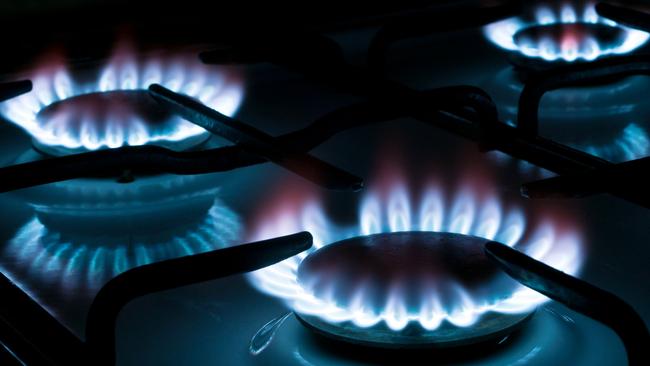Four reasons gas and electricity prices are suddenly sky-high
Australia’s “apocalyptic” east coast energy crisis has hit hard and fast. And there’s no easy way out of the nasty position much of the country is now in.
Costs
Don't miss out on the headlines from Costs. Followed categories will be added to My News.
Gas users and the new Labor Government are describing Australia’s sudden east coast energy crisis as “apocalyptic”, resulting from “a perfect storm” of factors.
There is no doubt that a rare combination of international and domestic events, together with long-term policy shortcomings, have led to a very nasty position from which there is no easy way out.
Four events have led to the immediate crisis.
1. Coal-fired generators have been failing
First, outages at coal-fired power stations have meant that gas has been called on more than usual.
More than one-quarter of coal-fired plants have been offline for much of the year so far, which is far from usual.
The system is designed so that when (coal-fired plants go down) gas generators take their place.

2. Australia is running low on gas
Second, the Australian Energy Market Operator (AEMO) has been warning of gas supply shortages in the southeast for some time as traditional gas resources, mainly in offshore Victoria, run low.
Onshore gas development in Victoria has been prevented by a succession of state government decisions, and input terminals have been either rejected on environmental grounds or delayed due to financial barriers.
In 2012 the Gillard government rejected the idea of reserving a certain proportion of gas for domestic consumption, as happens in Western Australia.
The history of cheap and plentiful gas in Victoria has made Victorian households and firms more dependent on gas than other Australians, and there has been little move towards electrification.
3. Europe wants non-Russian gas
Third, in their desperation to reduce their dependence on piped Russian gas, European countries have been pushing the international price of liquefied natural gas sky high, buying from countries such as Australia, Qatar and the United States.
Some Australian exporters have received prices four or more times higher than normal.

4. Suddenly, there’s a cold snap
Finally, a cold snap on Australia’s east coast has brought forward the winter spike in demand for gas for heating.
The immediate impact of the combination of these four events has been a looming shortage of gas on the east coast, including gas to supply power stations.
Cold, showery and windy conditions are set to re-develop as a strong cold front moves across south-east Aus during Sunday.
— Bureau of Meteorology, Australia (@BOM_au) June 4, 2022
âš ï¸A warning for damaging winds >90km/h is current for 5 states and territories, blizzard conditions for the Alps.
Latest warnings: https://t.co/50aaa2HFSjpic.twitter.com/MCghYanhYK
Industrial gas consumers who do not have the protection of a fixed contract are facing potentially destructive prices.
Thankfully there is no immediate price impact for households using gas, as their retailers have gas supply contracts, although many households are suffering higher electricity prices because gas-fired power stations have had to be pushed into service to replace coal-fired stations.
Quick actions
AEMO has taken action, partly by imposing a wholesale price cap of $40 per gigajoule ahead of forecasts the spot price in Victoria was set to climb $382.
The “shadow price” used to indicate what would have happened were it not for the cap, hit $800 on Tuesday.
And AEMO has triggered the so-called Gas Supply Guarantee Mechanism to secure gas for power generators.
These actions have worked, even though a price of $40 per gigajoule is financially crippling for large industrial consumers, and AEMO cannot magically source gas that isn’t there.
No overnight answer
New Climate Change and Energy Minister Chris Bowen is already working closely with AEMO and his state and territory counterparts and industry to get complete information and advice.
But as Treasurer Jim Chalmers said on Tuesday, there’s no overnight answer.
The Turnbull government introduced the Australian Domestic Gas Security Mechanism in 2017 in response to concerns that exports of liquefied natural gas from Queensland might one day create domestic shortages.

It was also concerned that gas producers were selling gas overseas at lower prices than they were asking for at home.
The threat of government intervention has generally ensured supply.
But the mechanism is unlikely to be effective in addressing the current problem, for two reasons.
First, there are physical limits on getting gas awaiting export in Queensland to Victoria where it is needed. And second, to the frustration of many gas customers, the mechanism can’t bring down prices, which are set internationally. It deals only with supply.
More challenges ahead
The current crisis illustrates the fundamental policy connection between electricity supply, gas markets and climate change.
The decision to immediately convene a meeting of the national energy and resources ministers and the relevant agencies is the right first step, but only the beginning of a journey that will involve urgent and sustained reforms to the way Australia’s markets work.
The new Government has indeed come to power in the face of a perfect storm, and there are more challenges ahead. Its approach so far has been constructive, measured and co-operative – and it has resisted the temptation to make promises it can’t keep.
It is to be hoped that this new approach will enable it to navigate through to what will almost certainly be somewhat calmer waters ahead.
Tony Wood is energy program director at the Grattan Institute
This article originally appeared in The Conversation and has been republished with permission
Originally published as Four reasons gas and electricity prices are suddenly sky-high



